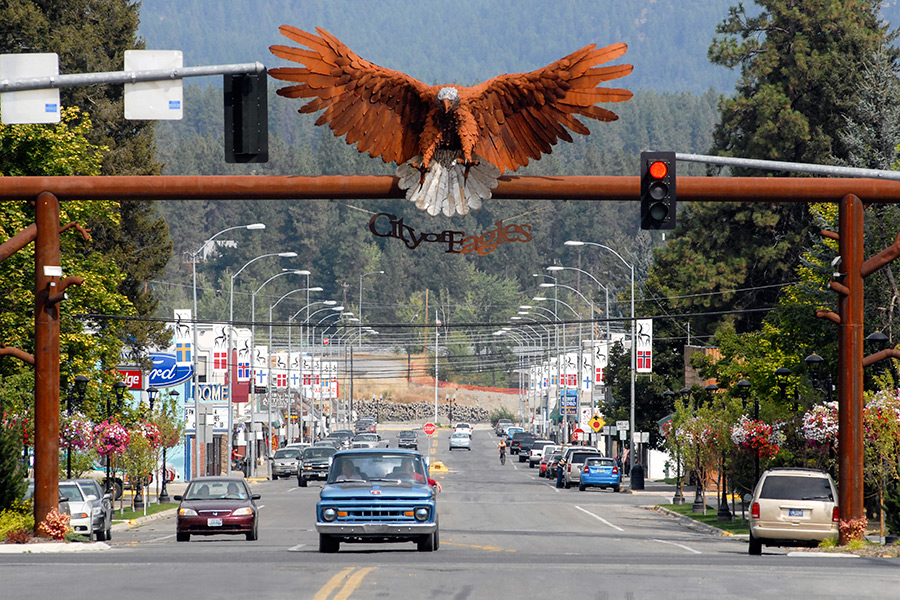State and federal environmental regulators have struck an agreement with BNSF Railway they say holds the company responsible for maintaining health and safety measures along a 42-mile segment of asbestos-contaminated track near Libby, where a now-shuttered vermiculite mine once spewed multi-ton clouds of asbestos-laden dust over the community every day and freighted the toxic material across the country.
The extent of the town’s industrial contamination was so widespread that federal officials in 2002 designated the area for cleanup under the National Priorities List, which is more commonly known as Superfund.
On Sept. 1, federal and state officials announced the proposed agreement with BNSF, calling it “a significant achievement” in the decades-long effort to deliver justice to the community of Libby, where hundreds have died and thousands have been sickened as a result of the asbestos exposure from the W.R. Grace and Co. vermiculite mine, once the lifeblood of Libby.
According to federal officials, handing the area known as Operable Unit (OU) 6 over to company officials with BNSF helps ensure that future safety protocols remain in an area where disturbances could lead to new exposure pathways.
“This proposed agreement … will ensure that BNSF maintains the long-term protectiveness of the remedy already in place for OU6 and reflects the progress made to protect community members and workers from exposure to Libby Amphibole asbestos,” according to a statement from the U.S. Environmental Agency’s Region 8 Administrator Gregory Sopkin.
The EPA, along with the Montana Department of Environmental Quality [DEQ] and BNSF proposed that the company take over 42 miles (68 kilometers) of rail yards in Northwest Montana. Cleanup efforts have been deemed complete in the locations, EPA officials said, and the company would be charged with maintaining them.
Under the proposed agreement, BNSF will develop “institutional controls” for the area to ensure the remedy remains protective and will implement “best practices” to reduce the potential for exposure. Protective measures include securing properties, limiting unauthorized entry and minimizing the potential for the disturbance of soils in the approximately 42 miles of BNSF right-of-way in OU6.
OU6 is made up of railroad rail line, right-of-way, and rail yards located in Libby and Troy, all property owned by BNSF. EPA does not anticipate any further cleanup requirements within OU6, officials said.
Earlier this year, in a unanimous decision, the Montana Supreme Court determined that BNSF Railway is not shielded from liability for its role in spreading asbestos-laden dust Libby.
Facing hundreds of asbestos-related damage claims stemming from the W.R. Grace operations of a now-shuttered vermiculite mine and the company’s alleged role in shipping contaminated materials across the country, BNSF appealed a January 2019 ruling by Montana Asbestos Claims Court Judge Amy Eddy, of Kalispell, who concluded the plaintiffs’ claims against BNSF are not preempted by federal law, as BNSF argued, and that the company is not exempt from liability.
BNSF appealed Eddy’s decision and asked the state Supreme Court to overturn it, with both parties delivering oral arguments last October.
According to Justice Jim Rice, who delivered the March 11 opinion, “BNSF is subject to strict liability because its actions in handling the asbestos constitute an abnormally dangerous activity.”
Two decades ago, the scope of asbestos exposure in Libby came to light when news reports detailed a link between the deadly fibers unearthed at a vermiculite mine operated by W.R. Grace and Co. between 1963 and 1990 and the hundreds of people who were sick and dying because of exposure to asbestos-laden dust.
Two of the diseases most commonly associated with asbestos — asbestosis and mesothelioma — have latency periods of up to 40 years, and people who were exposed to the asbestos dust continue to develop illnesses today.
The U.S. Department of Justice ahs published a formal notice in its federal register and will accept public comment on the proposed Consent Decree for a period of 30 days. To comment on the Consent Decree, email [email protected].
